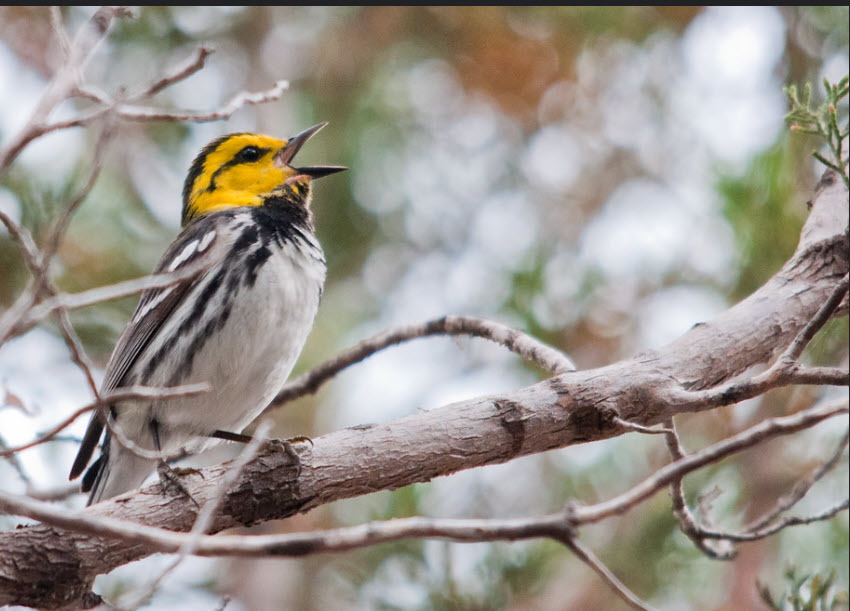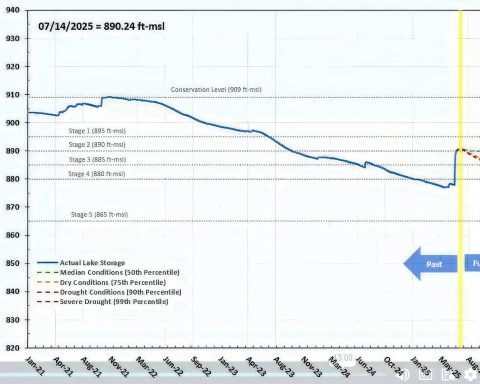by Azalia Rodriguez
Defenders of Wildlife
As the Texas Hill Country landscape continues to change, local wildlife is being pushed to its limits. Golden-cheeked Warbler populations are declining, indicator species in our waterways are disappearing, and migratory birds are being directed off their natural flight pathway.
Conservationists caution against the predictable fate of our beloved Texas Hill Country as rapid growth continues to surpass conservation in the state. If development is expected to support the growth of millions of people coming to the Hill Country over the next 20 years, it must be balanced with strategic investments in natural infrastructure.
In creating the Hill Country Land, Water, Sky and Natural Infrastructure Plan, aka Natural Infrastructure Plan (NIP), the Texas Hill Country Conservation Network surveyed a sample of Hill Country residents and found that a majority prioritized protecting water supplies. The more than 2,800 respondents also highlighted prioritizing protections for wildlife habitats and open lands.
NIP is a blueprint to maintain wild landscapes for growing municipalities through actions like land conservation easements and endangered species protections. Natural infrastructure — ecological systems such as forested open space, healthy rangeland, and starry skies — benefit all life.
The water supply in the Hill County is struggling to support seasons of drought and is further challenged by the floods that often follow. As made clear by recent wildfires and dry creek beds, drought impacts on land are easy to see but are far less apparent when it comes to underground aquifers.
Locals know to look to the vulnerable, permeable skin of the salamander as an indicator of the health of the Hill Country waterways. The aquifer-dwelling blind salamander and fellow ‘Texas Treasures’ (native aquatic animals) cannot migrate, roam or voyage onto land in search of suitable habitat.
The survival of unique, endemic species like the San Marcos salamander or the Wide-mouth Blindcat is contingent upon both water quality and quantity – factors at risk of both pollution and overuse due to urban expansion.
All aquatic species living in restricted habitats like the caves of the Edwards Aquifer or Barton Springs are either declining or unknown in number.
These indicator species rely on the interconnected natural water infrastructure of Central Texas, which also provides us streams to swim in, rivers to float down, and clean drinking water to slake our thirst.
In short, these complex ecosystems underpin our very own existence and quality of life in Central Texas.
Unchecked development has also led to the loss of working lands and fragmented wildlife habitats all of which have contributed to a decline in the Hill Country’s rich biodiversity. The rolling hills and distinct landscape for which the Hill Country is named are home to a number of endemic animals that rely on this specific ecosystem to thrive.
In the peak of spring, locals recognize the song of the endangered Golden-cheeked Warbler. While these unique birds may be found in various trees throughout the region, nesting females can only be found in mature Ashe juniper trees – as they rely on the bark of these drought-tolerant plants. This beloved and imperiled songbird has seen sharp declines in habitat for more than three decades.
Yet open spaces continue to be converted for human use, further reducing habitat for the Golden-cheeked Warbler. At the same time, the Ashe juniper, which helps mitigate the ravages of flood waters, continues to be targeted to make way for more roads and buildings in Central Texas. The Natural Infrastructure Plan highlights ways to conserve open space for the benefit of all Hill Country residents, including native wildlife.
The Golden-cheeked Warbler, sadly, is not the only bird at risk from rapid development in the Hill Country.
The Hill Country is on the North American pathway for billions of birds. Our area, which increasingly lights up the evening sky with artificial light, can see up to 400 million birds in a single night during spring and fall migrations.
These migratory birds are at serious risk as they need dark skies for safe travel and can become disoriented when flying over artificial light. Confusion from our skyglow can cause birds to change their natural course, pulling them further away from the Hill Country and the oasis it provides.
As our region undergoes rapid population growth and development expansion, land, water, sky, and wildlife are under extreme pressure to remain intact. Investing in nature-based solutions and the work of native wildlife can help mitigate some of the impacts on wildlife and the landscape and habitat on which it relies.
Thankfully, Hill Country communities are overwhelmingly supportive of that investment, with 85% of survey respondents showing support for increasing public funding for conservation. In the last 30 years, over 30 conservation-focused ballot measures have passed across the region. In 2022, Kendall County voters approved a $20 million ballot initiative for open space conservation.
While these local victories are inspirational, leaders of the state must allow the public to have a voice in preserving natural areas by putting conservation funds on the ballot across the state and following initiatives like those laid out in the Natural Infrastructure Plan.
About the Author:
Azalia Rodríguez is the Texas Representative at Defenders of Wildlife. Azalia serves on the Steering Committees of the Texas Hill Country Conservation Network. Azalia is an outings leader for Latino Outdoors Austin and a partner of the state-wide campaign of Lights Out, Texas. Azalia advocates for imperiled native wildlife in the Texas Hill Country.




